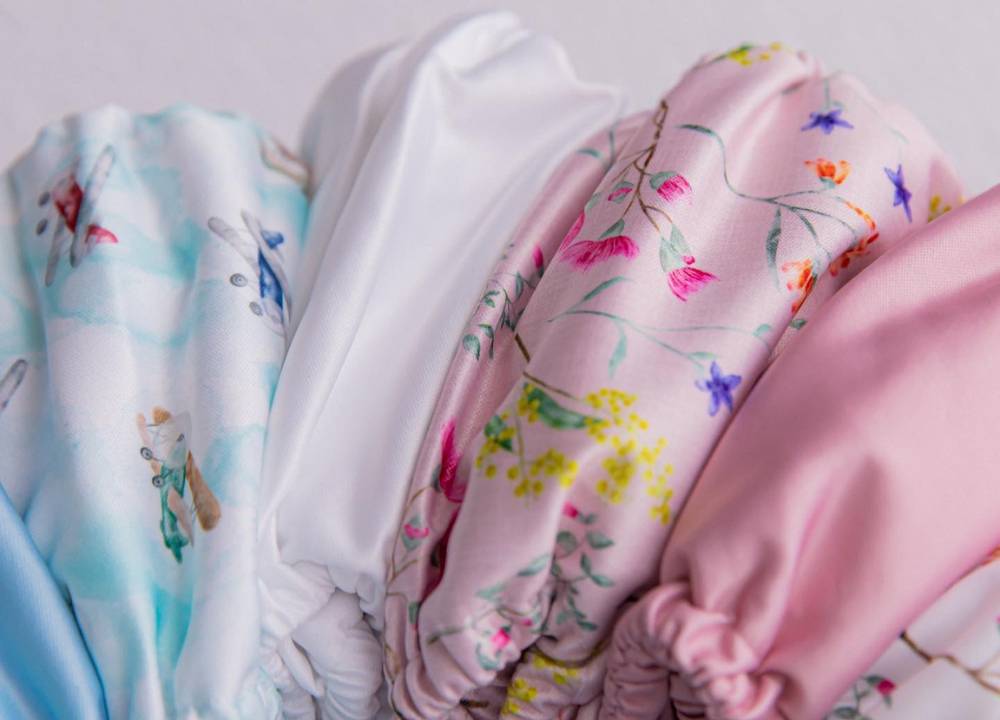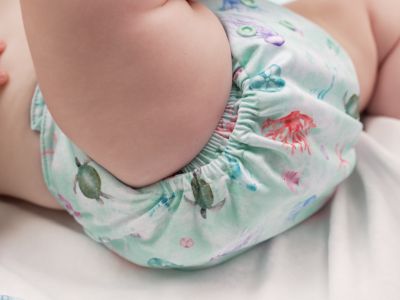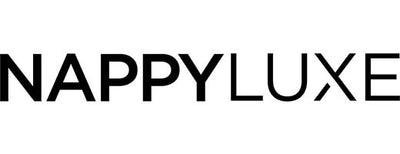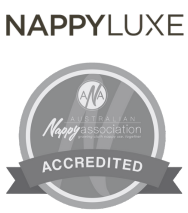Best Cloth Nappies Australia [What Features Do Top Brands Have In Common]

Cloth nappies are great for the environment and your wallet, but with hundreds of brands and styles of nappies to choose from, it can be hard to know what to look for.
Read our guide to find out what features the best cloth nappies typically have in common, to assist you in making the right choice for your family.
Cloth nappies provide an eco-friendly alternative to using disposable nappies.
By choosing to reuse, you prevent thousands of disposable nappies from ending up in landfill, and you'll save thousands of dollars simultaneously.
To get started with cloth, you'll need to think about how many cloth nappies you really need and add up how much this will cost.
As a quick guide, 24 nappies is an ideal minimum amount for full-time use, and between six and 12 for part-time use.
It's not a cheap up-front investment, and it's natural to wonder why there's a stark difference in price between brands and types.
The truth of the matter is that not all reusable nappies are created equal."
Some nappy brands are better than others at preventing leaks and can last many years for multiple babies, whilst others can leak constantly or at worst even fall apart after just a few washes.
By learning what features the best cloth nappies in Australia have in common, you can ensure you choose wisely and that your investment is well spent.
The main features we'll cover in this blog include:
- Double gusset / double leg elastic
- Double outer layer
- Good absorbency
- Comprehensive wash guide
- Simplicity of use
- Premium quality
If you consider these features while searching for the best cloth nappies, you have a better chance of choosing an effective, long-lasting product to keep your baby dry and happy.
Now let's get into the detail of each of these features.
Double gusset / double leg elastic
Double gusset cloth nappies (otherwise known as double leg elastics), means there are two elastics that go around baby's thighs/legs, providing a "leak guard".
Those who are familiar with disposable nappies will know that they are also made with leak guards - and there's a reason for this.
In short, for both cloth and disposable nappies the elastic parts are a bit of a weak spot where leaks are most likely to occur.

Having an additional guard/elastic helps prevent clothing from sitting directly against this weak spot, and reduces the likelihood of liquid wicking onto baby's clothing. It also provides more space in the nappy to add additional absorbency when your baby needs it.
An extra leg elastic is a premium feature that the best cloth nappies typically include. It costs more to manufacture, but is well worth it for preventing leaks out the legs.
TOP TIP: If a cloth nappy comes with a "double gusset" check images of the nappies to ensure it refers to external double leg elastics (as per the image above) and not double "inner gussets". Double "inner gussets" don't provide the same outer leak guard feature.
Double outer layer
The outer layer of the cover of the nappy is made of PUL (Polyurethane Laminate), a water-resistant material that helps to contain mess inside.
This layer works in conjunction with the absorbent inserts, together they keep your baby and their clothes feeling dry and comfortable.
All nappies, both disposable and cloth, eventually will leak through the outer layer when they are fully saturated. Therefore an excellent feature to look for is a double layer of PUL, providing TWICE the protection against leakages."
NappyLuxe is proud to be one for the few manufacturers in Australia that offers this leak-preventing feature as standard with all nappies.
Good absorbency
Choosing a nappy that comes with the best material for optimal absorbency, as well as the right amount of layers, is a great way to ensure your baby stays dry.
The material used to make the nappy inserts, as well as how much of it there is, all has an impact on how absorbent the nappy is.
A low level of absorbency can lead to regular leaks, hourly nappy changes, and needing to bulk up the nappy to a large size, causing discomfort for baby and difficulty in fitting clothing over the top.
There are various different types of absorbent material used to make nappies, and some work better than others.
Microfibre is a common choice of material for cheaper brands as it's low-cost, but it has some drawbacks.
It typically doesn't hold much liquid, and is prone to compression leaks - picture a sponge absorbing liquid, but pushing it back out when pressure is applied such as a baby car seat strap.
Furthermore, cheaper brands often will only provide a single insert with each nappy, which isn't enough absorbency, and you'll need to purchase more as your baby grows.
The best cloth nappies in Australia often come with two inserts as standard, made from high quality material such as bamboo."
Bamboo Terry is the material of choice for NappyLuxe nappies, and each nappy comes with two inserts - providing 12 layers of thirsty absorbency.
This type of Bamboo material provides the ideal balance between excellent absorbency, speedy drying time, and is topped with a silky-soft stay-dry layer for added comfort for baby.
Learn more about what are the best cloth nappy inserts made from to delve deeper into the pros and cons of each type of material.
Comprehensive wash guide
For the vast majority of us, nappies are going to be the dirtiest item to ever wash in our washing machines.
With urine and faeces to clean, it's extremely important to get it right.
Many brands recommend washing at a cold temperature, for too short a duration, or with an insufficient amount of detergent. This simply isn't adequate to keep the nappies clean.
The best nappy brands recommend and advocate for sufficient hot washes (60 degrees is the temperature required to kill bacteria) as well as a thorough two step wash process."
Here are the main risks of inadequate washing:
- Stains and smells - the nappies should stay white and fresh after every wash, yes - even after being covered in poo. If they are still stained or smelly after being washed, this means that they aren't clean enough and bacteria may still be present.
- Nappy rash - ammonia (a smelly chemical that forms from urine) can quickly build up in nappies that haven't been washed properly, and this can lead to a painful red nappy rash on baby's delicate bottom.
- Nappies deteriorating - ammonia build up can also start to wear away the fabric of the nappy inserts and shorten their lifespan.
- Giving up - it can feel frustrating to carefully follow a wash guide and see it not working out as you'd hoped. This negative experience can lead to many giving up on using cloth nappies altogether.
NappyLuxe recommends a two-step wash process, with at least one of these washes being a 60 degree hot wash, to ensure the nappies are kept sparkling clean for many years.
View our guide about how to wash and clean cloth nappies correctly to learn the ins and outs of washing your nappies.
Simplicity of use
If you're just starting out with reusable nappies, chances are you're having to learn a lot of new information about how to wash, care for, and fit the nappies on your baby.
Many brands offer multiple different types and styles of nappies that can lead to information overload and confusion over the jargon: prefolds, flats, pockets, fitteds, to name but a few.
At NappyLuxe, we believe in simplicity. We understand what our customers want in a nappy and we provide one single type of cloth nappy to answer this need.
Our nappies are loved by both new and experienced cloth nappy users.
The nappies are designed with a quick and easy snap-in system, enabling the inserts to be snapped into place onto the nappy cover, without any need to fold flat material or stuff fiddly pockets.
Premium quality
There's a saying we love at NappyLuxe as it so often rings true: Buy nice or buy twice.
By choosing premium quality cloth nappies, you ensure you're choosing wisely for your baby and that the products will last for many years.
On the flip-side, cheaper nappies are usually made with lower-cost materials, which can leak or not last as long as you were hoping.
If the outer PUL material is poor quality for example, it can quickly delaminate in a 60 degree wash.
Once delamination has occurred, it loses it's water-resistance and cannot be fixed, rendering the product unusable as a nappy.
Good quality PUL can easily withstand many years of 60 degree washes, and careful use of bleach if required.
By opting to purchase your reusable nappies from a premium quality Australian-owned business that has carefully selected an ethical manufacturer, you are supporting fair pay and working conditions for the people who made your products.
By choosing quality, you also protect your investment, allowing the nappies to last for many years and be passed down from baby to baby.
Which is the best cloth nappy brand in Australia?
While the answer to the "best" cloth nappy is truly subjective, what is clear is that the top Aussie brands include similar design features and use premium tried and tested materials.
Meet the Author
Natalie Lassen

Natalie, Founder of NappyLuxe, is an eco-conscious mother and entrepreneur who discovered the benefits of cloth nappies for her family and the environment. With a mission to create the ultimate cloth nappy, she spent years researching and testing various designs before launching NappyLuxe - a range of high-quality, easy-to-use, and ultra-absorbent cloth nappies. Natalie is passionate about sharing her experience and expertise, helping parents make informed decisions and embark on their own sustainable parenting journey.
Blog posts
How To Use Wool Nappy Covers At Night (Benefits & Wash guide)
Best Cloth Nappies Australia [What Features Do Top Brands Have In Common]
The 5 Top Uses For Cloth Wipes Revealed
Get 10% off your first order
Plus get notified about promotions, new releases and journal updates.





















